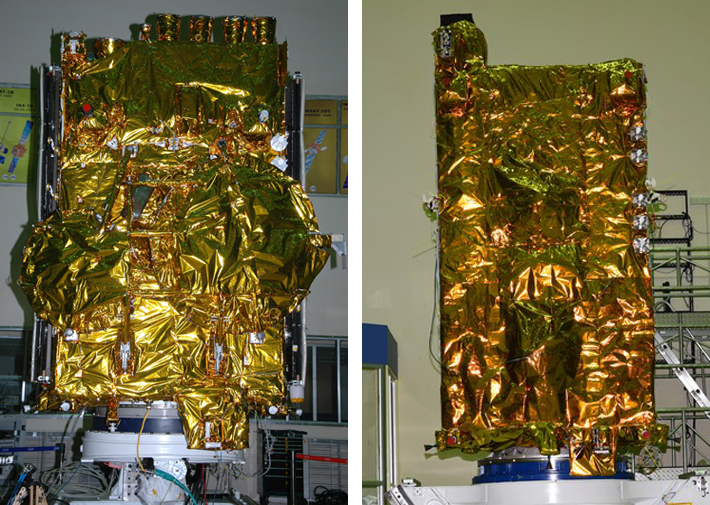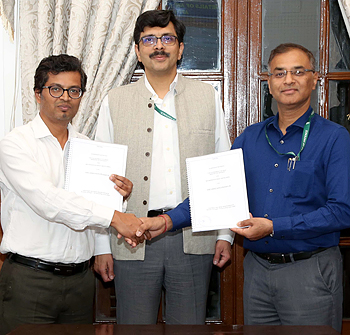INDIAN ARMED FORCES CHIEFS ON OUR RELENTLESS AND FOCUSED PUBLISHING EFFORTS

The insightful articles, inspiring narrations and analytical perspectives presented by the Editorial Team, establish an alluring connect with the reader. My compliments and best wishes to SP Guide Publications.

"Over the past 60 years, the growth of SP Guide Publications has mirrored the rising stature of Indian Navy. Its well-researched and informative magazines on Defence and Aerospace sector have served to shape an educated opinion of our military personnel, policy makers and the public alike. I wish SP's Publication team continued success, fair winds and following seas in all future endeavour!"

Since, its inception in 1964, SP Guide Publications has consistently demonstrated commitment to high-quality journalism in the aerospace and defence sectors, earning a well-deserved reputation as Asia's largest media house in this domain. I wish SP Guide Publications continued success in its pursuit of excellence.
- MoD initiates comprehensive review of Defence Acquisition Procedure 2020, pushes for defence reforms
- G7: The Swansong
- Kalinga Connect: South Asia to Polynesia
- Must Credit DRDO for Operation Sindoor, now what is next for defence R&D?
- The layered Air Defence systems that worked superbly, the key element of Operation Sindoor
- Operation Sindoor | Day 2 DGMOs Briefing
- Operation Sindoor: Resolute yet Restrained
Exclusive Army Satellite
The geostationary satellite will considerably enhance the communication capability of the Indian Army by providing mission-critical, beyond line of sight communication to troops and formations as well as weapon and airborne platforms
 |
The Author is Former Director General of Information Systems and A Special Forces Veteran, Indian Army |

On March 29, 2023, the Ministry of Defence (MoD) signed a contract that would give an exclusive communication satellite to the Indian Army. The 3,000 crore agreement with NewSpace India Limited (NSIL) would provide a 5-tonne class top-end indigenous communication satellite for the land forces. Media quoted a MoD official saying, “A contract with NewSpace India Limited has been signed to procure an advanced communication satellite GSAT-7B, which will provide high throughput services to the Indian Army. The project costs 2,963 crore.”
The official MoD further said, “The geostationary satellite will considerably enhance the communication capability of the Indian Army by providing mission-critical, beyond line of sight communication to troops and formations as well as weapon and airborne platforms.” In the absence of its own dedicated satellite, the Indian Army currently uses some of the transponders on-board GSLV-7A.
India currently has two military communication satellites – GSAT-7 (Rukmini for the Indian Navy) and GSAT-7A (Angry Bird for the IAF) that were launched in the last decade
India currently has two military communication satellites – GSAT-7 (Rukmini for the Indian Navy) and GSAT-7A (Angry Bird for the IAF) that were launched in the last decade. The first one GSAT-7 had 11 transponders including a UHF (ultra high frequency) one to communicate with submarines and was launched in 2013. GSAT-7A (Angry Bird) was launched five years later in December 2018 from Sriharikota using the indigenous GSLV. This was one of the heaviest satellites lifted by the GSLV.

Unlike the satellites for the Navy and IAF, the payload for GSAT-7B for exclusive use of the Indian Army would be one packing more transponders to carry out complex tasks. It will be the first-of-its-kind in the 5-tonne category and developed indigenously by the Indian Space Research Organisation (ISRO). Many parts and sub-assemblies and systems will be sourced from indigenous manufacturers, including MSMEs and startups, thereby giving a fillip to the private Indian space industry.
Satellite based communication systems allow for secure, reliable communication between forces in different locations. This allows for rapid coordination of operations and allows commanders to respond quickly to changing battlefield conditions. By using encrypted satellite links, the military forces can communicate securely without fear of interception. This can be especially important in hostile environments, where traditional communications networks may be unreliable or unavailable. Overall, the use of satellite technology in military operations provides a range of advantages. From providing situational awareness to secure communications and navigation capabilities, satellite technology can help military forces to complete their mission objectives more effectively and safely.
From providing situational awareness to secure communications and navigation capabilities, satellite technology can help military forces to complete their mission objectives more effectively and safely.
As an exclusive communication satellite, GSAT-7B will be a big advantage for the Indian Army. But at the same time, we must remember that exclusive military satellites are lucrative targets for the enemy and the consequences if these are knocked out or crippled at a critical time. In its report released on September 1, 2020, the Pentagon said that China is progressing with the development of missile and electronic weapons that could target satellites in low and high orbits. The report said that China already has operational ground-based missiles that can hit satellites in low-Earth orbit and “probably intends to pursue additional ASAT weapons capable of destroying satellites up to geosynchronous Earth’.
The Pentagon says Chinese military strategists regard the ability to use space-based systems and to deny them to adversaries as central to modern warfare. According to the Pentagon, the so-called counter-space capabilities developed by China include kinetic-kill missiles, ground-based lasers, orbiting space robots and space surveillance to monitor objects across the globe and in space.
The expanding space capabilities of China in complete disregard to calls against weaponisation of space, make our satellites vulnerable – particularly our military satellites
The war in Ukraine is witnessing massive activation of space with profusion of Starlink satellites being used by NATO-backed Ukrainian forces to target Russian forces. There have also been reports of some Starlink satellites crashing down which could have been due to Russia targeting them although SpaceX CEO Elon Musk has said that these satellites were shut down to prevent drone control by Ukrainian military and the conflict escalating into a world war.
We need to acknowledge that the expanding space capabilities of China in complete disregard to calls against weaponisation of space, make our satellites vulnerable – particularly our military satellites. China has also been practicing ‘capture’ of satellites by robots in space on the pretext of capturing its own defunct satellites. The US used the same excuse for undertaking its ASAT test on its own satellite. Finally, India needs to rapidly develop its space capabilities. At the same time, ‘hardening’ of our military satellites against enemy action will need to be examined, along with the need to develop redundancy in satellite communications.





